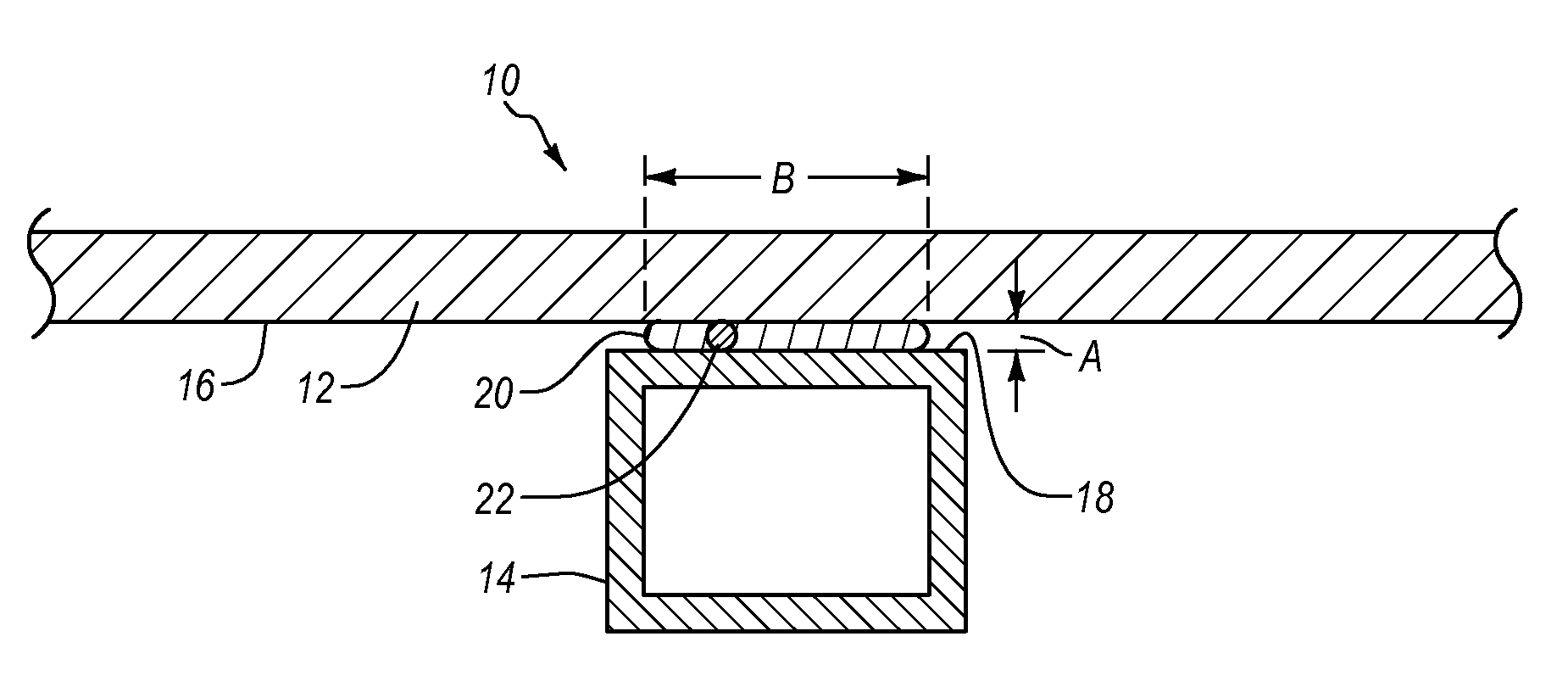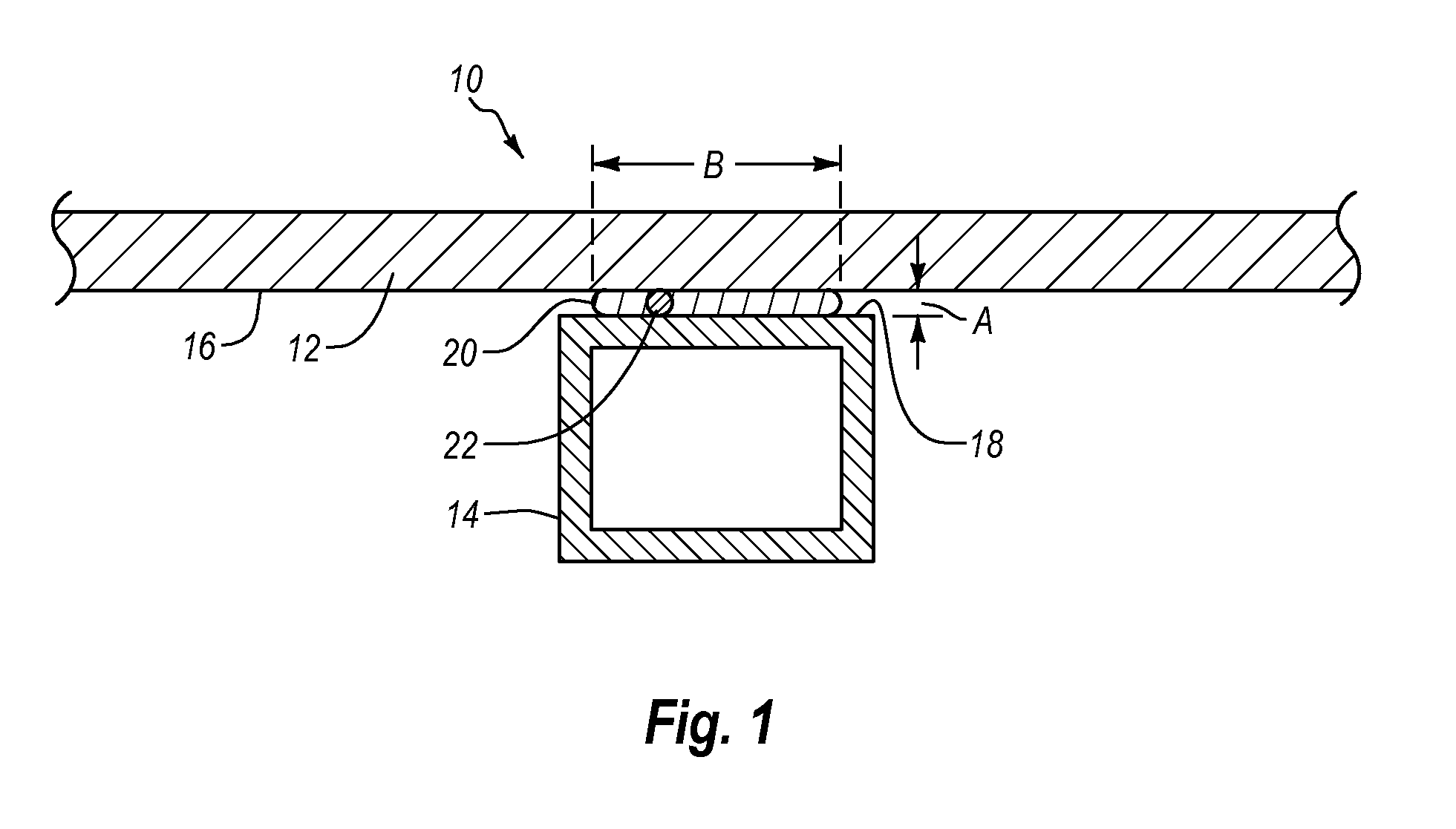Basketball backboard
a backboard and acrylic technology, applied in the direction of adhesive processes, lamination ancillary operations, chemistry apparatus and processes, etc., can solve the problems of long cure time and cohesive failure, and achieve the effects of improving the efficiency and cost of the basketball backboard assembly process, excellent adhesion and flexibility, and low cos
- Summary
- Abstract
- Description
- Claims
- Application Information
AI Technical Summary
Benefits of technology
Problems solved by technology
Method used
Image
Examples
Embodiment Construction
[0013]The present invention is directed to an acrylic basketball backboard assembly and to a method of bonding an acrylic basketball backboard to a frame structure. FIG. 1 shows cross-sectional view of a cut-away portion of an acrylic basketball backboard assembly 10. The backboard assembly 10 includes an acrylic backboard 12 bonded to a frame structure 14. The backboard 12 includes a backboard bonding surface 16, and the frame structure 14 includes a frame bonding surface 18. An elastomeric adhesive 20 is sandwiched between the two bonding surfaces 16 and 18. The elastomeric adhesive 20 replaces the VHB double-sided tape currently used with acrylic backboards.
[0014]After testing a large number of different elastomeric adhesives from different suppliers, silicone adhesive was preferred because it provides a bond of sufficient strength and flexibility, comparable to that obtained with conventional foam filled, two-sided tape. It was also preferred because of its low cost and availabi...
PUM
 Login to View More
Login to View More Abstract
Description
Claims
Application Information
 Login to View More
Login to View More - R&D
- Intellectual Property
- Life Sciences
- Materials
- Tech Scout
- Unparalleled Data Quality
- Higher Quality Content
- 60% Fewer Hallucinations
Browse by: Latest US Patents, China's latest patents, Technical Efficacy Thesaurus, Application Domain, Technology Topic, Popular Technical Reports.
© 2025 PatSnap. All rights reserved.Legal|Privacy policy|Modern Slavery Act Transparency Statement|Sitemap|About US| Contact US: help@patsnap.com


